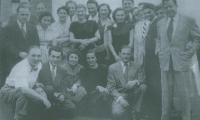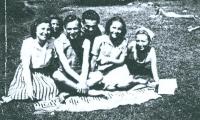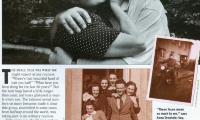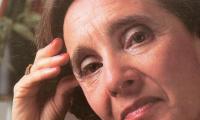Dr. Anna Ornstein
Description
Anna (Brünn) Ornstein was born into an affluent family in Szendro, Hungary on January 27, 1927. A small town of 4,000 residents and only 40 Jewish families, the presence of antisemitism was felt by Anna throughout her childhood. Anna was deported to Auschwitz concentration camp at the age of seventeen along with her mother and many members of her extended family. Anna’s father and grandmother were sent immediately to the gas chambers but Anna, along with her mother and cousin, were chosen to work.
The women were forced to undress and sit on narrow benches while their hair was cut. The women then picked shoes and a dress from large piles of clothing. After about a week, Anna and her family were sent to Plaszow concentration camp. Their work consisted of carrying large stones from a quarry to a pile, but no buildings were being built with the stones. After being in Plaszow for about six weeks, Anna and her family were sent back to Auschwitz and remained there about a month. Once returning to Auschwitz, Anna received a number tattoo and it gave her the hope that at least she was registered and wouldn’t be killed. In her writing, Anna describes in detail how she managed to find the person who did the neatest tattoo and get on that line. She was determined that her tattoo would have small well-shaped numbers.
Anna survived time in a few different concentration camps. Her mother was the only other member of her immediate family to survive, though they found that her aunt had survived as well. The three women were reunited in Hungary. After liberation, Anna discovered that Paul Ornstein, whom she had met prior to the War, had also survived and was in medical school. He returned to Budapest where he and Anna were married in March of 1946. After their marriage they escaped from Russian occupied Hungary into West Germany. Knowing that it would take a number of years before they would be able to immigrate to Palestine or the United States they both enrolled in medical school in Heidelberg where Anna became a child psychiatrist. Anna and Paul came to the United States in the early 1950s. Anna has worked variously in the field of child psychiatry, securing prestigious clinical and academic positions.
Dr. Anna Ornstein knew she wanted to help people long before she saw the horrors of the Holocaust. She took her experiences from the Holocaust and became a doctor and an important psychiatrist, writing and speaking on the psychological aspects of the Holocaust. Dr. Ornstein was a long-time faculty member in the Department of Psychiatry at the University of Cincinnati. She was instrumental in developing an entire new school of psychiatry referred to as self-psychology that focuses on empathy as a source of understanding human interactions. She was a Co-Director of the International Center for the Study of Psychoanalytic Self-Psychology. Currently she is a lecturer in Psychiatry at Harvard Medical School.
Dr. Anna Ornstein has a published collection of short stories of her life during the War called My Mother’s Eyes: Holocaust Memories of a Young Girl, which was published in 2004. The Center for Holocaust and Humanity Education also has more details about her story in the Center’s archives.









































 Related collections
Related collections


Leave a Comment